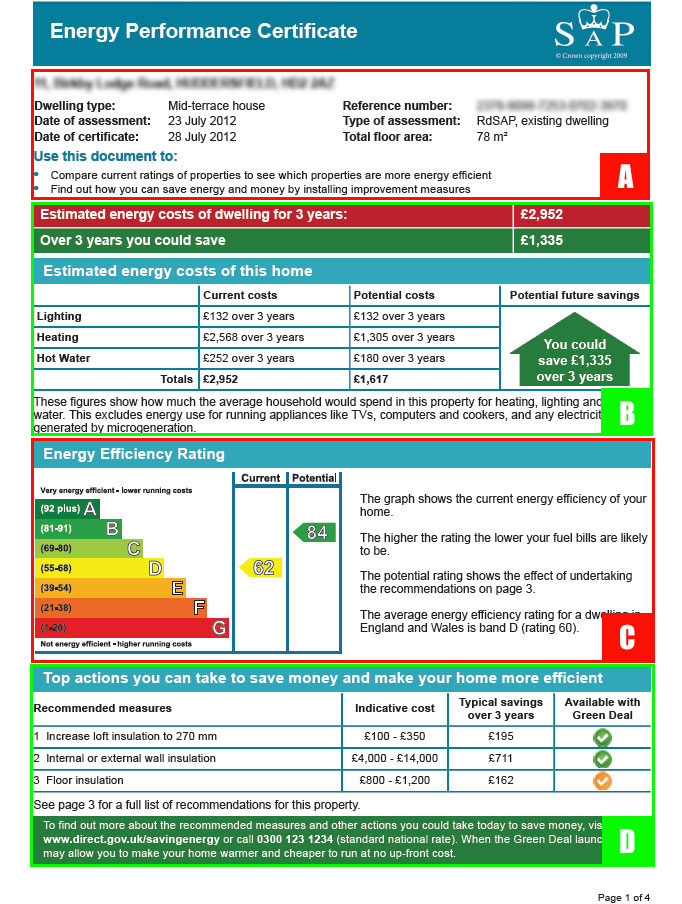What is an EPC?
Page 1
At Easy EPC we like to follow up our EPC inspections with a courtesy call to answer any questions you may have about your EPC. We also explain the suggestions that the document makes for improving the energy rating of your property. This article details each aspect of the EPC and what it means in layman’s terms.
Section A
Dwelling type: This is the classification of the property (Flat, Detached House, Semi Detached House etc). For the purposes of the EPC any property that has another property above or below it is classified as a flat. This classification does not have any effect on the result of the EPC as this is based on actual measurements of property volume and external wall areas etc.
Date of assessment: This is the date that the DEA visited the property.
Date of certificate: This is the date that the certificate was lodged on the government database.
Reference number: This 24 digit number is unique to each certificate. It can be used at any time during the certificates ten year life span to retrieve the document from the government database. It is worth noting that when using this number you will always need to include the hyphens.
Type of assessment: RDSAP, existing dwelling is the technical term for your domestic EPC. RDSAP refers to the 'Reduced Data Standard Assessment Procedure', the methodology that is used to produce your EPC rating.
Total floor area: This is the total floor area of your property measured in square meters. Outbuildings are not included in the EPC survey unless they are heated and habitable.
Section B
This section looks at your estimated energy costs and potential savings. This energy cost analysis only looks at proportion of your energy usage that goes towards heating, hot water and lighting. The EPC does not look at how the property is used on a day to day basis so appliance use is not included in this figure.
These figures do not take into account any electricity generated by micro generation such as wind turbines and solar panels.
Red Header: This shows an estimate of your energy costs over a 3 year period.
Green Header: From the data gathered this is an estimate of how much money could be saved on your energy bills, over 3 years if you follow the recommendations in the report.
Blue Header: This shows an estimate of your current energy costs and potential savings over a 3 year period, broken down into the 3 separate energy use categories; Lighting, Heating and Hot Water.
Section C
This Section shows you the EPC Graph, which is what comes to mind when most people think of the EPC. The graph displays two ratings, current and potential. The ratings are based on a score from 0 to 100, with 100 being the most energy efficient and 0 being the least. The ratings are also split into bands of A to G.
Current: Is the buildings actual EPC rating as of the date of the survey.
Potential: Is the rating that the property would achieve if all of the recommendations that the report suggest on page 3 were carried out.
Section D
This section shows you the most highly recommended measures you could undertake to improve your homes energy efficiency.
Recommended measures: Lists the measure in question.
Indicative cost: This gives an estimate of how much the energy saving measure is likely to cost to implement.
Typical saving over three years: This is the estimated amount of money that the recommended measure will save the property in energy bills over a three year period.
Available with Green Deal: This shows whether the measure is available for full or partial funding under the governments ‘Green Deal’ scheme. A green tick means the measure can be installed with no direct charge to the householder, paying for itself by the savings it generates. An orange tick means the measure is eligible for partial funding under the same scheme.
Page 2 >>>

